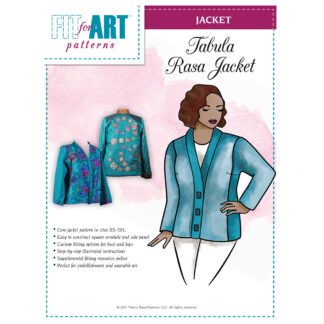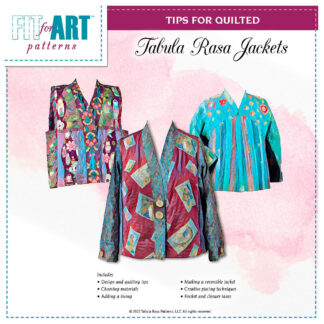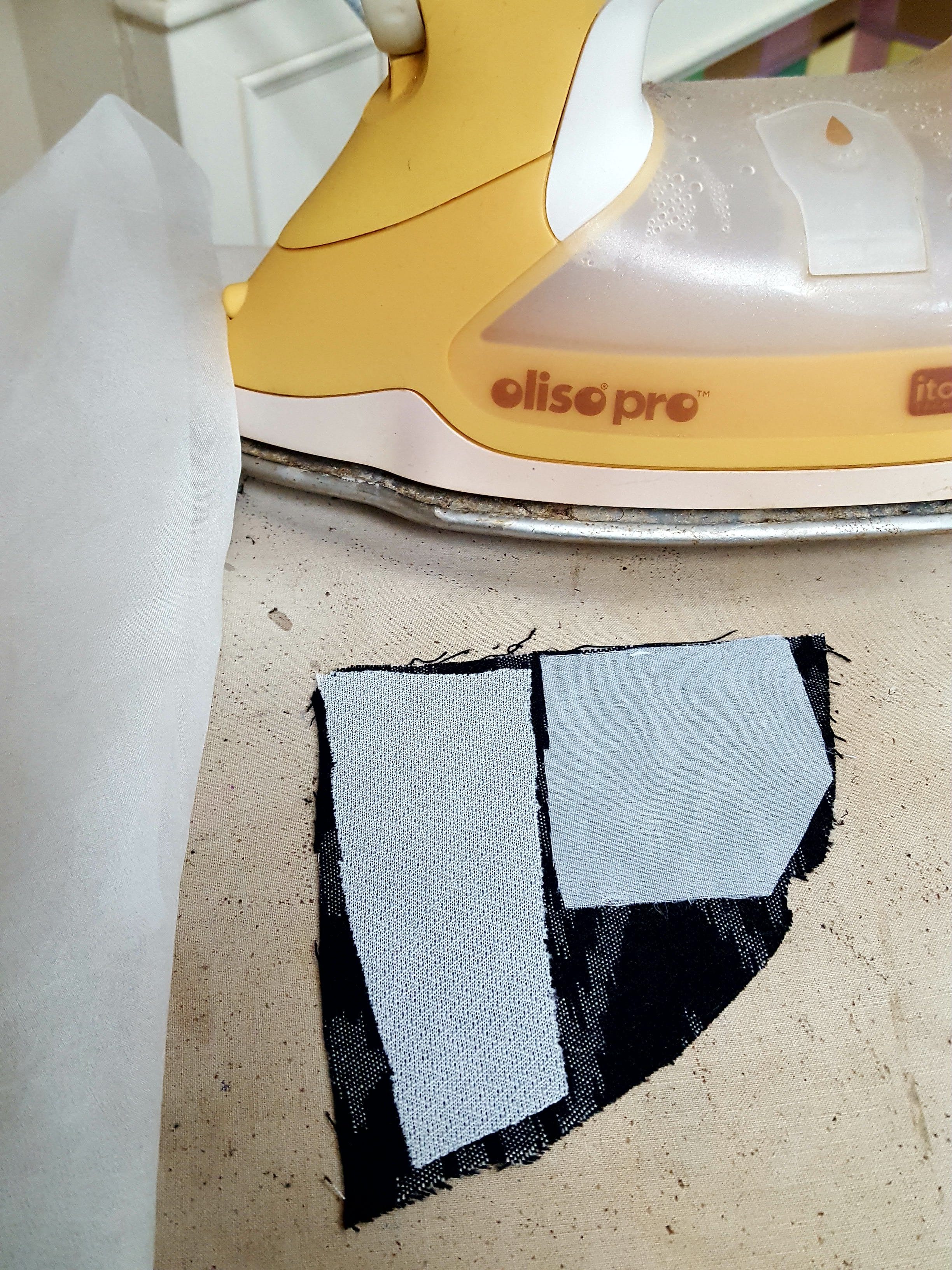
Understanding interfacing is essential to sewing clothing that looks neat and keeps its shape wear after wear. To construct great garments, you must embrace interfacing as your friend.
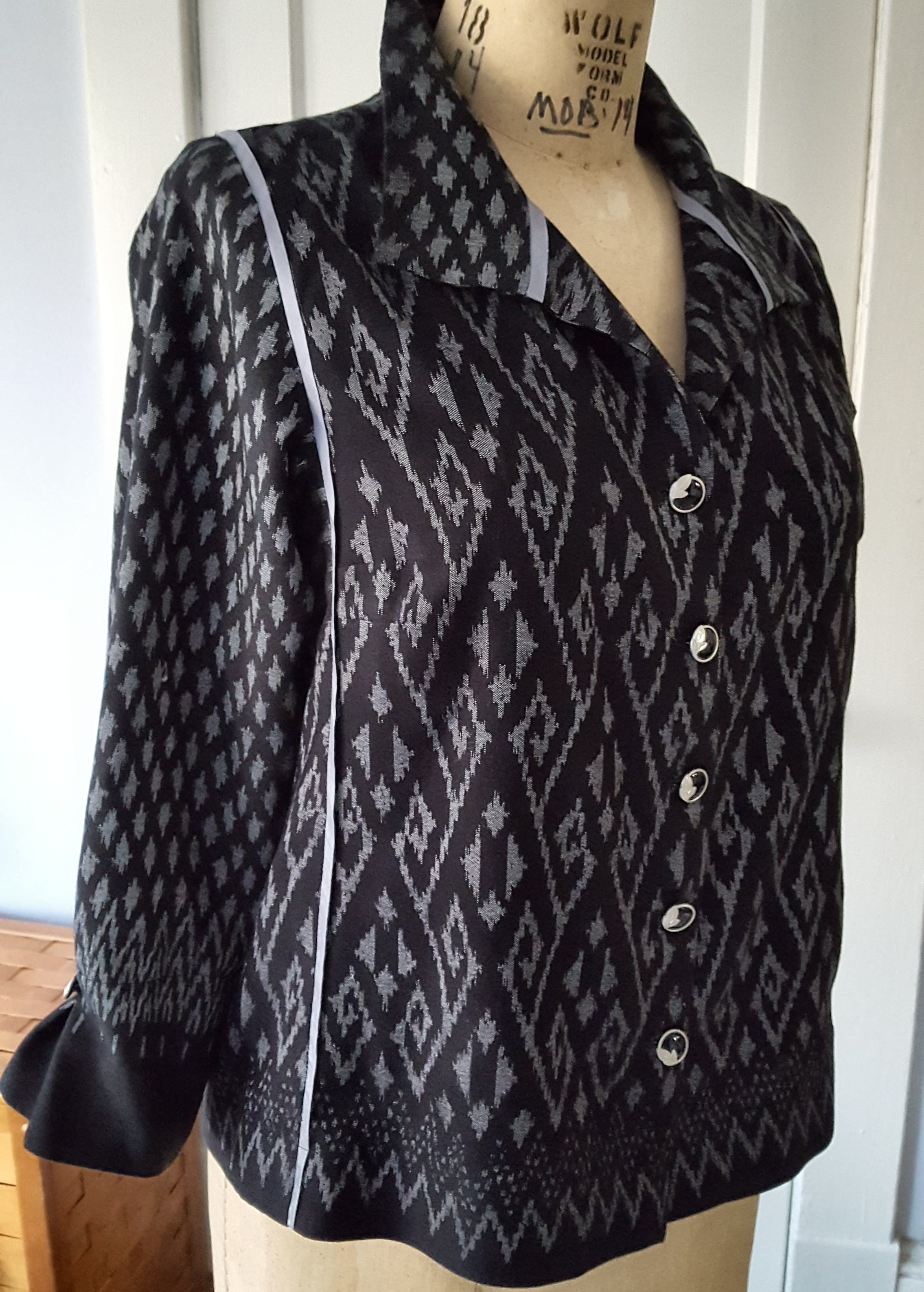
Let’s look at a shirt I recently made to see how the interfacing turned this soft polyester blend Ikat into a fabulous spread collar Tabula Rasa Jacket (TRJ) with Shirt Variations.
Shirts need interfacing in the collars, facings and necklines where the collar attaches. This soft fabric also benefited from interfacing to support the center front buttons and buttonholes and the hemlines. The Design section of the Shirt Variations pattern has plenty of additional information about interfacings to help you make good choices.
After I cut out the shirt, I used a fabric scrap to make an interfacing sample. This is one step to include whenever you are interfacing a garment. Take scraps of interfacing you think will work and fuse them to the scrap with your iron and press cloth.

I began with the Envy Silk and Soft Stretch. Then I added some French Fuse for further investigation. Fold a hem into the fused sample and press it into place to determine which products offer the structure you are looking for.
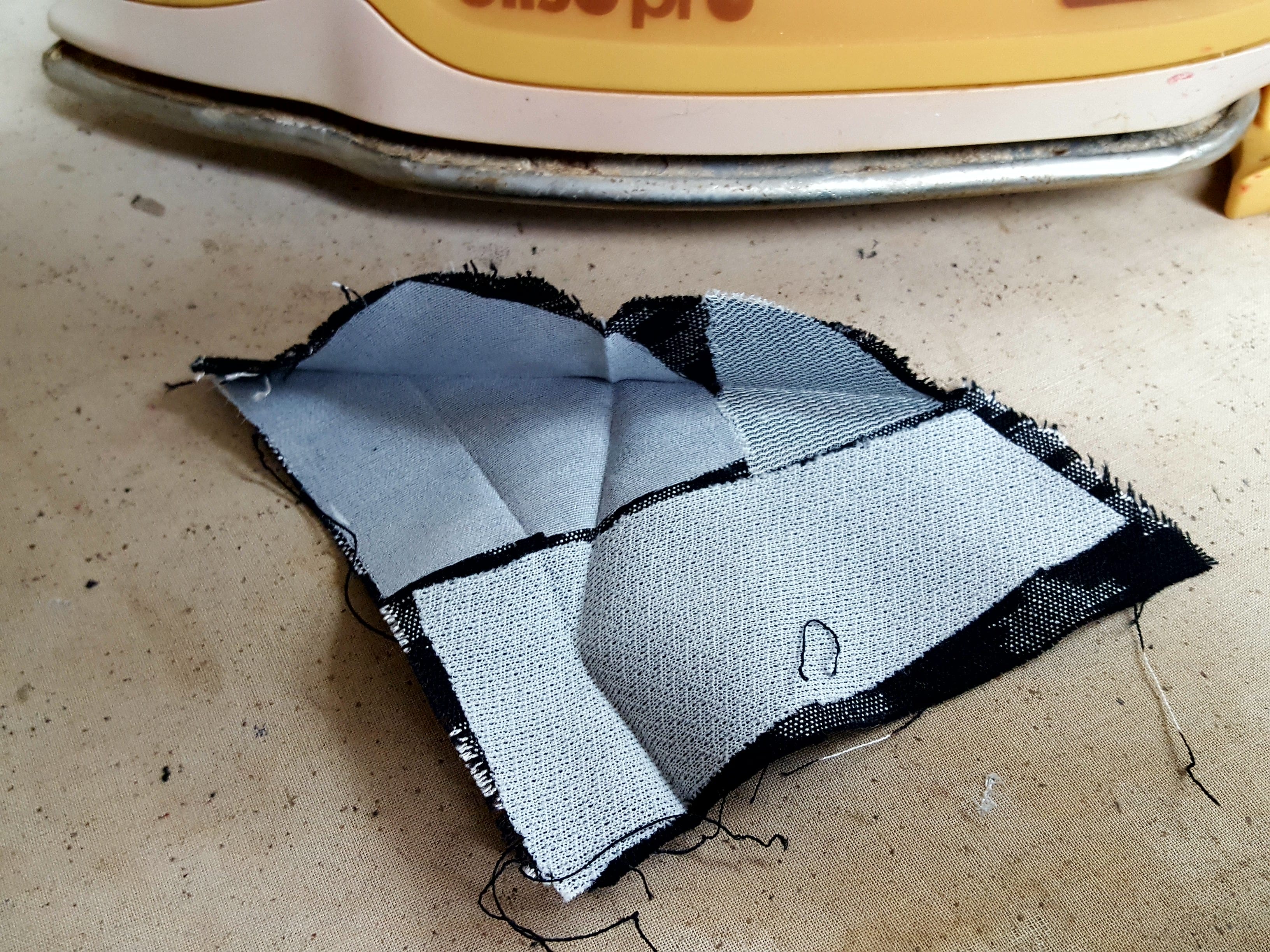
I decided to use the Envy Silk on the front openings, facings, upper collar and hems to keep this shirt soft. For the under collar, I chose the Soft Stretch for a little more loft and stiffness where I wanted it most.
Interfacing comes in black and white and while the sample shows white interfacing, I chose black for the actual shirt. All the fusing takes place before construction, so the interfacing is anchored in the seams.

Once the shirt was constructed, I used my interfacing sample to make a buttonhole to test my stitching and the length. The first one was a little small, so I made a second test buttonhole, which was just right. (See more photos of this shirt’s construction on Instagram where it was a project of the week.)
When we made our first appearance as Fit for Art Patterns in 2011, we had three products: the Tabula Rasa Jacket, Tips for Quilted Jackets, and Interfacing Samplers. We knew even then that good quality interfacing takes a home-made garment to the next level and is not always available to home sewers.
When Fit for Art was in its infancy, our Interfacing Samplers included one-yard pieces of three different interfacings. In 2015, we added a fourth type of interfacing. In 2016 we began packaging the two lightest weight interfacings in a smaller package for knits and fine fabrics.
We love offering you the best tools for your sewing projects. Now, we offer our four signature interfacings by the yard, so you can stock up on your favorites without purchasing the sampler packs. We encourage you to purchase your favorites. That way, you will always be prepared with the tools you need for your next sewing project.
Happy Sewing, RAE




